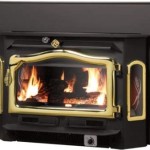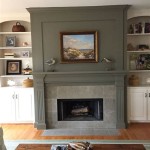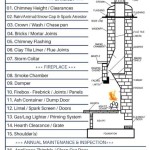Cast Iron Fireplace With Tile Inserts: A Timeless Fusion of Function and Aesthetics
The cast iron fireplace with tile inserts represents a significant evolution in home heating and design. This type of fireplace combines the robust heat retention and classic appearance of cast iron with the decorative versatility and heat-resistant properties of tile. Its enduring popularity stems from its ability to provide both efficient warmth and a visually appealing focal point within a room.
Historically, fireplaces were essential for both heating and cooking. The transition to cast iron marked a significant improvement over earlier open hearths, offering more controlled combustion and better heat distribution. The addition of tile inserts further enhanced the functionality and aesthetic possibilities of the fireplace. Tile provided a durable and relatively inexpensive cladding that could withstand high temperatures while allowing for a wide range of decorative styles.
Modern iterations of the cast iron fireplace with tile inserts continue to leverage these historical advantages while incorporating contemporary design elements and combustion technologies. These fireplaces are available in a variety of sizes, styles, and finishes to complement diverse architectural aesthetics. The integration of efficient burning systems, such as those compliant with modern emissions standards, ensures that these fireplaces remain a viable and environmentally responsible heating option.
The Advantages of Cast Iron Construction
Cast iron is an alloy of iron, carbon, and silicon, renowned for its exceptional strength, durability, and heat retention capabilities. These properties make it an ideal material for constructing fireplaces, which are subjected to repeated cycles of high temperatures. The ability of cast iron to absorb and radiate heat uniformly contributes to a more consistent and comfortable room temperature.
The inherent mass of cast iron allows it to store a significant amount of thermal energy. This means that even after the fire has burned down, the fireplace will continue to radiate heat for an extended period, providing sustained warmth. This characteristic is particularly beneficial during cold weather, as it reduces the frequency of refueling and minimizes temperature fluctuations.
Furthermore, cast iron is a remarkably durable material, resistant to warping, cracking, and other forms of damage that can occur with prolonged exposure to high temperatures. A well-maintained cast iron fireplace can last for generations, making it a worthwhile investment in the long-term value and comfort of a home. The weight and stability of cast iron also contribute to the overall safety of the fireplace, reducing the risk of tipping or shifting.
The Role of Tile Inserts in Design and Functionality
Tile inserts serve a dual purpose in cast iron fireplaces, contributing both to the aesthetic appeal and the overall functionality of the unit. Tiles are typically placed around the firebox opening, providing a decorative frame that enhances the visual impact of the flames. The wide array of available tile styles, colors, and patterns allows homeowners to customize the fireplace to match their personal preferences and complement the existing decor of the room.
From a functional standpoint, tile inserts provide a protective barrier between the cast iron frame and the surrounding wall. Tiles are inherently heat-resistant, preventing the transfer of excessive heat to combustible materials and reducing the risk of fire. This added layer of protection is particularly important in older homes where walls may not be adequately insulated.
The non-porous surface of most tiles also makes them easy to clean and maintain. Ash, soot, and other byproducts of combustion can be easily wiped away, preserving the appearance of the fireplace and preventing the buildup of unsightly stains. The durability of tile ensures that it can withstand repeated cleaning without fading, scratching, or otherwise deteriorating.
Styles and Variations of Cast Iron Fireplaces with Tile Inserts
Cast iron fireplaces with tile inserts are available in a wide range of styles to suit various architectural preferences. Victorian-era fireplaces often feature ornate detailing, intricate castings, and brightly colored tile inserts. These fireplaces evoke a sense of elegance and grandeur, adding a touch of historical charm to any room.
Arts and Crafts-style fireplaces emphasize simplicity, functionality, and natural materials. These fireplaces typically feature clean lines, minimal ornamentation, and earth-toned tile inserts made from materials such as ceramic or terracotta. The Arts and Crafts style reflects a commitment to handcrafted quality and a rejection of mass-produced goods.
Contemporary fireplaces often incorporate sleek, minimalist designs with neutral-colored tile inserts. These fireplaces blend seamlessly with modern interiors, providing a subtle yet sophisticated focal point. Some contemporary models also feature integrated glass doors that allow for unobstructed viewing of the flames while enhancing safety and efficiency.
Beyond the decorative styles, the functionality of the fireplace can also vary. Some models are designed primarily for aesthetic purposes, providing a visually appealing centerpiece without necessarily being the primary source of heat. Others are equipped with high-efficiency combustion systems and are capable of heating substantial living spaces. The choice depends on the individual needs and preferences of the homeowner.
The selection process for a cast iron fireplace usually involves determining the size of the space requiring heat, the desired aesthetic style, and the available fuel source. Modern fireplaces can be fueled by wood, gas, or electricity, each offering distinct advantages in terms of convenience, cost, and environmental impact. Wood-burning fireplaces provide a traditional ambiance and abundant heat, while gas fireplaces offer the convenience of instant ignition and adjustable flame levels. Electric fireplaces are the easiest to install and operate but may not provide the same level of warmth as their wood or gas counterparts.
Installation of a cast iron fireplace with tile inserts requires careful planning and adherence to local building codes. A professional installer can ensure that the fireplace is properly vented, connected to the fuel source, and safely integrated into the existing structure of the home. Proper installation is essential for both safety and optimal performance.
Regular maintenance is also crucial for preserving the longevity and efficiency of a cast iron fireplace. This includes routine cleaning of the firebox, chimney, and tile inserts. Periodic inspections by a qualified technician can identify and address any potential problems before they escalate into more serious issues. Proper maintenance will ensure that the fireplace continues to provide warmth and beauty for years to come.
In conclusion, the cast iron fireplace with tile inserts remains a popular choice for homeowners seeking a combination of classic aesthetics and efficient heating. Its enduring appeal stems from the inherent advantages of cast iron construction, the decorative versatility of tile inserts, and the wide range of available styles and configurations. By carefully selecting and maintaining a cast iron fireplace, homeowners can create a warm, inviting, and visually appealing focal point in their homes.

How To Personalise Your Cast Iron Fire With Tile Inserts Direct Fireplaces

Gallery Prince Cast Iron Tiled Fireplace Insert Flames Co

Normandy Cast Iron Tiled Insert 40 Victorian Fireplace

Gallery Worcester 54 Solid Pine Wood Fireplace With Sovereign Cast Iron Tiled Insert Fireplaces4life

Aston Integra Cast Iron Fireplace Insert Edwardian Fireplaces

Gallery Tulip Cast Iron Tiled Fireplace Insert Flames Co

Sovereign Tiled Insert Fireplace Cast Fireplaces

Gallery Sovereign Cast Iron Tiled Fireplace Insert Flames Co

Gallery Collection Toulouse Tiled Cast Iron Insert From Direct Fireplaces

Any Black Tiled Insert And Palmerston Cast Iron Fireplace Fireplaces








